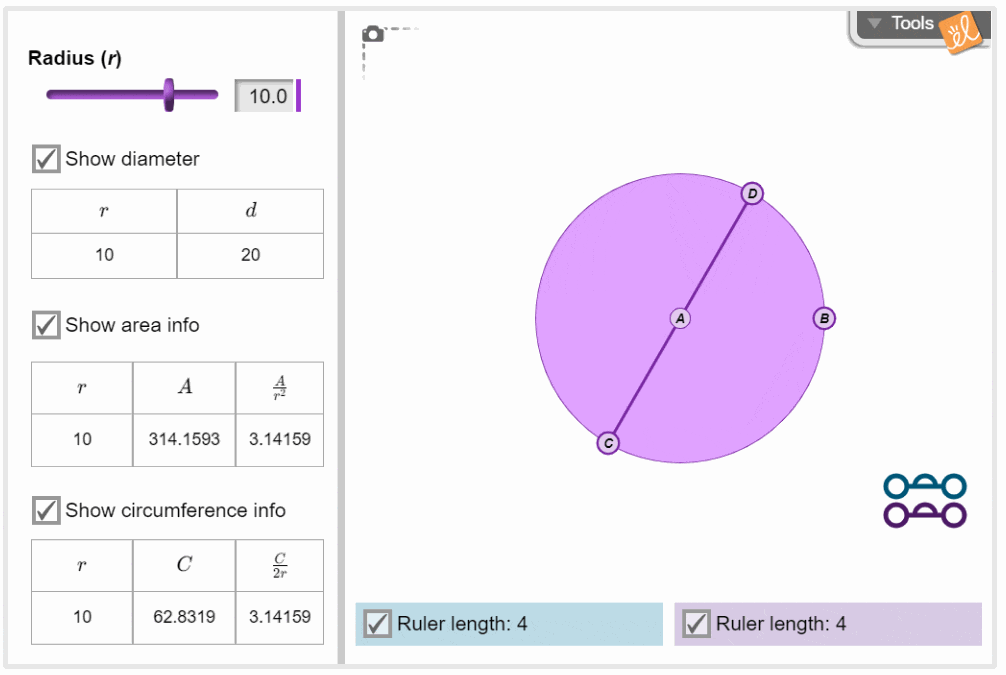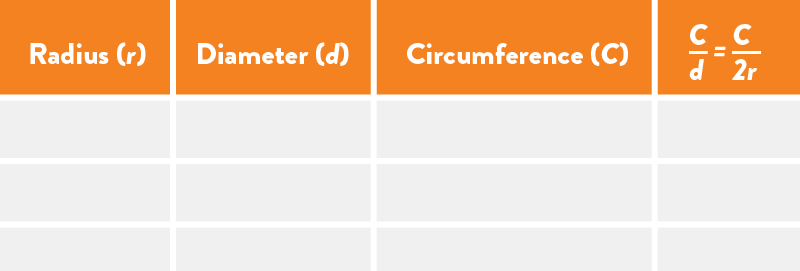
When the calendar date lends itself to celebrating a math concept, it’s a no-brainer to go all in! Any way that teachers can engage and excite students is a win. March 14, or Pi Day, is one of those dates.
What is pi, and how do you teach the concept of pi?
Archimedes of Syracuse (287–212 BC) is considered to be one of the greatest mathematicians of the ancient world. He was the first to calculate the value of pi several thousand years ago. Pi is an irrational number (an unending decimal with no repeating pattern) most often approximated as 3.14. It’s the ratio of the circumference of any circle to the diameter of that circle, approximately equal to 3.14159.
How do you teach the concept of pi? Math teachers use lessons that involve circumference and diameter, the radius of a circle, and the ratio of a circle. Let’s dig into pi!
The significance of National Pi Day
If you wonder how celebrating Pi Day turned into a phenomenon in classrooms across the country, you can thank a man named Larry Shaw. As a physicist in 1988 at the Exploratorium in San Francisco, Shaw came up with the idea to celebrate pi on March 14 (or 3/14) as a fun activity with the rest of the staff. He served fruit pies and tea starting at 1:59 pm, the following three digits after 3.14. Teachers celebrate Pi Day, declared a national holiday by the U.S. Congress on March 12, 2009, in classrooms with math and science activities.
Celebrate Pi Day with a free interactive webinar for educators
The ExploreLearning Gizmos team is offering a free, live one-hour webinar to discover how to utilize Gizmos to make National Pi Day a memorable event in your classroom. Not a Gizmos user yet? No worries – please join us! This webinar is open to K-12 educators who teach math, science, or both. Prepare to receive creative ideas to engage students in celebrating Pi Day. Complete the form to choose your time and date from February 18 - March 7 and mark your calendar.

Teaching Pi: Creative approaches for elementary to high school students
What are some activities to do on Pi Day? Plenty of options exist, but Pi Day activities may look a little different throughout the grade levels. Celebrating Pi Day for elementary students will be more about exposure to the math concept than Pi Day activities for high school students.
Pi Day activities for elementary students
Planning Pi Day for elementary students doesn’t have to be limited to math time. Bring the celebration to other content areas. Any circle activity can be transformed into a way to celebrate pi on National Pi Day.
- Cutting Pi- Students need colored paper and yarn. Ask students to cut circles out of the colored paper. Then, wrap the string or yarn around the outside of the circular object (the circumference). Cut the string to the exact length of the circumference. Take the cut piece and lay it across the diameter of the circular object. Cut the string that length. Repeat. How many pieces can you cut? Whether the circle is big or small, you will always cut pi– three pieces with a little leftover.
- Pi Writes- Challenge kids with an ELA activity to brainstorm words that begin with “pi.” Allow them to work independently or with a partner. Set the timer for 2 or 3 minutes, and GO!
- Pi Paper Chain- Cut strips of paper with a different color of paper for each digit to make a paper chain. Hang it in your classroom or the hallway.
- Pi Bracelets- Use pipe cleaners to make bracelets and beads to represent pi for a project all students can wear.
- Pi Skyline Art- With graph paper and coloring supplies, color in the different boxes of the graph paper to show the series of numbers in pi. When finished, ask students to color the background of their Pi Skyline.
- Circle Scavenger Hunt- Pair students up for a scavenger hunt for circles in the classroom. Take time to share their findings.

Engaging Pi Day celebration ideas for middle school and beyond
Don’t just make a lesson plan on the circumference of a circle. Pi Day activities for middle school and high school students can take the concept to the next level.
- Tasty Pi- Allow students to celebrate pi with a treat! Cookies are perfect for measuring the circumference of circles. For a cross-curricular approach, work with FACS (Family and Consumer Science) teachers to bake the cookies.
- Run Pi- Partner with the PE teachers to have students run or walk the distance of pi.
- Pi Toss- Students cut large circles in the middle of paper plates. Use water bottles as the targets for a game of ring toss. Circles that make the targets earn 3.14 points. Missed shots earn zero. Take five turns and add the points. Highest scores win! Bonus activity– ask students to measure the plate's circumference and the cut circle.
- Two Truths and a Pi- This is a twist on Two Truths and a Lie. Students choose the false statement about various measurements related to circles. Teachers could prepare this, or students could come up with them.
- Just Eat It- Many delicious foods come in the shape of a circle. Pizza, cupcakes, and apple pies are just a few. Have students get all the measurements (radius, area, circumference, and diameter) before eating the treats.
- Write About Pi- Get creative with myths about the origin, creation, or original use of pi.

Teach pi and keep students engaged with Gizmos!
Gizmos offers students a unique, virtual opportunity to calculate the circumference and area of circles. In the Circumference and Area of Circles Gizmo, students explore how a diameter and a radius can be used to find the circumference and area of a circle.

Circumference and Area of Circles Gizmo
Students create circles and fill in a table, using the Gizmo ruler to find the circumference and other activities to explore circles and pi.

Check out the Gizmos that explore circles for lessons that continue the investigation.

Don’t stop with these Gizmos! ExploreLearning has the world’s largest library of math and science simulations. Take a trial and bring more Gizmos to your students.
Start My Trial